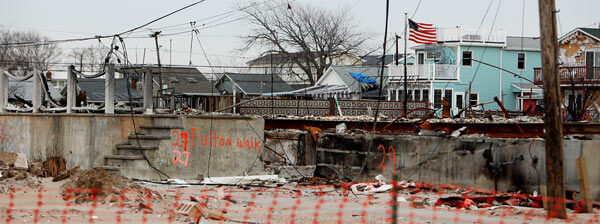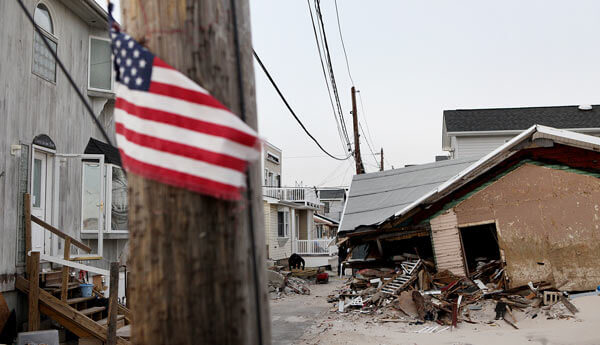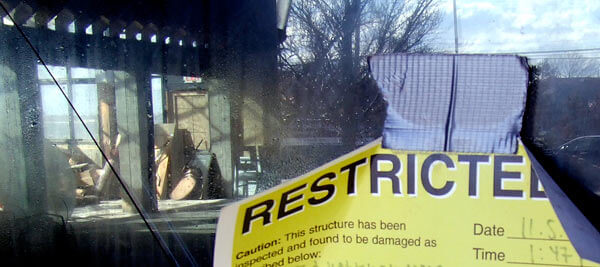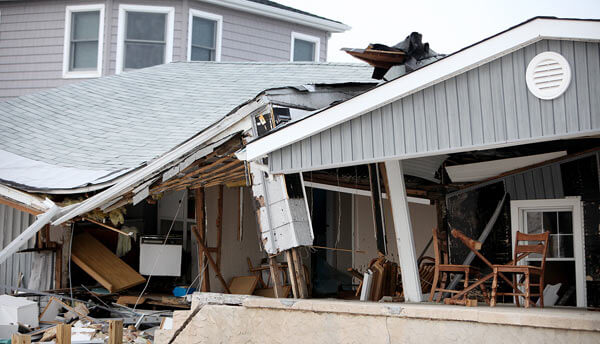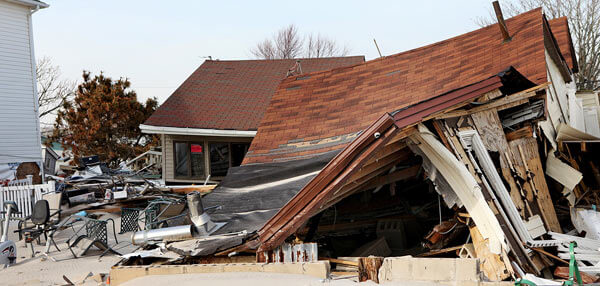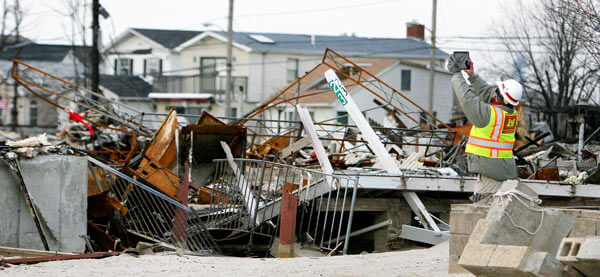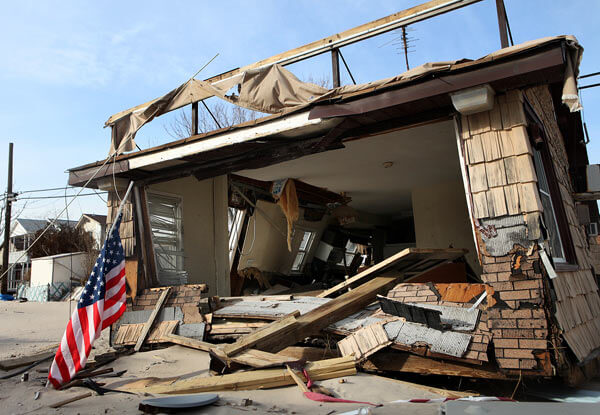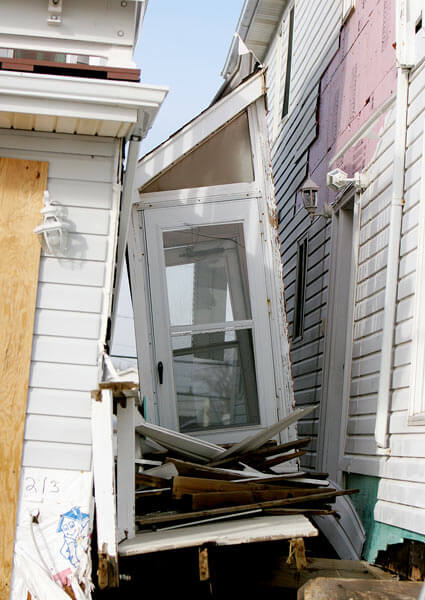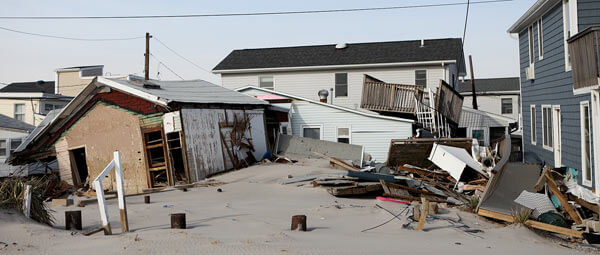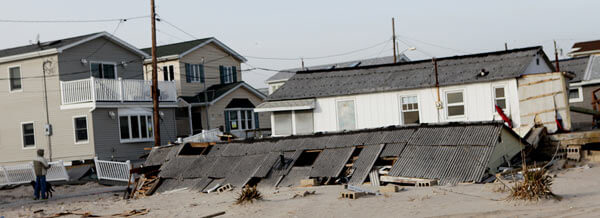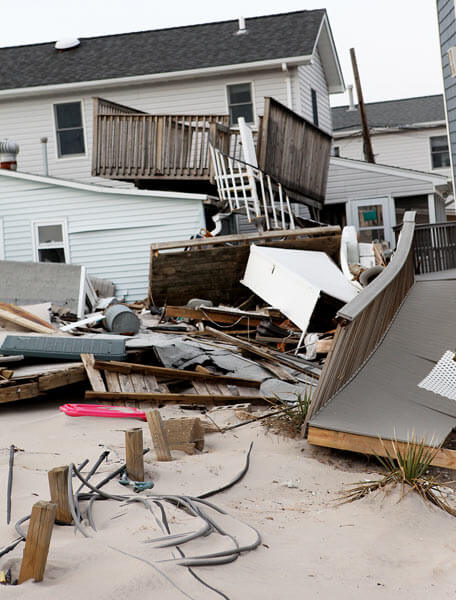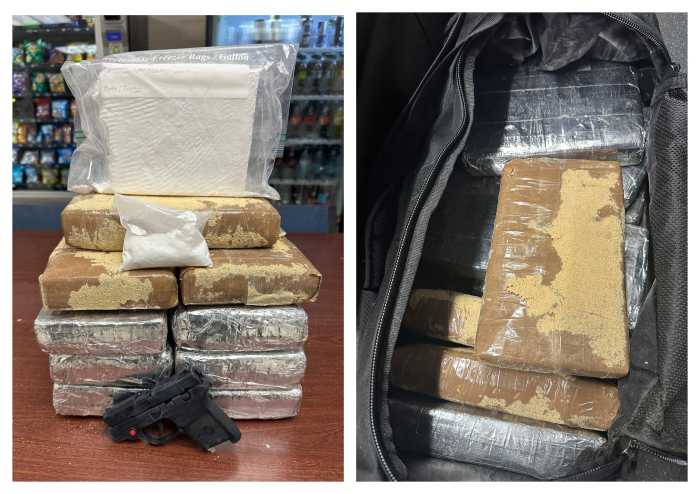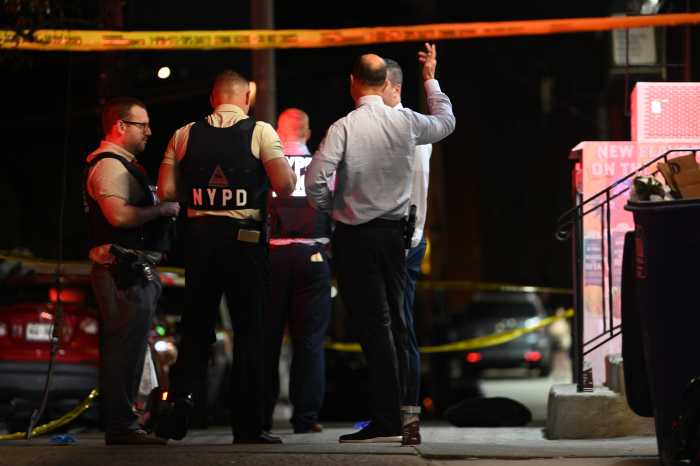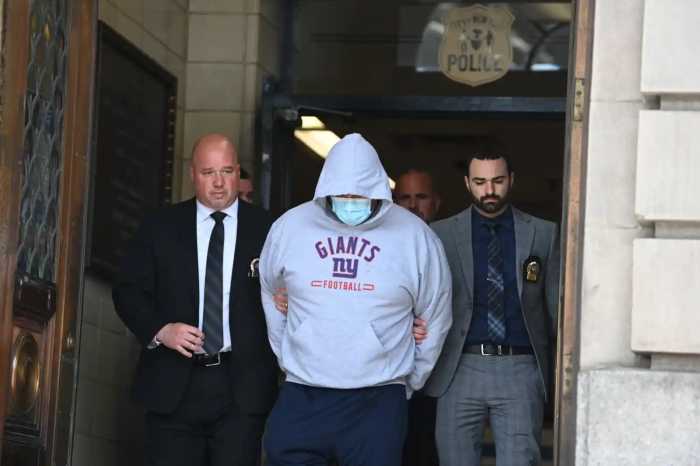By Karen Frantz
Three months after Hurricane Sandy devastated Breezy Point, many people say the sleepy coastal community will rebuild.
But the question for many is how different will it be?
“I just can’t imagine it ever being the same again,” said Chris Potter, whose father-in-law has lived in the neighborhood since 1972.
Potter and his 14-year-old daughter were back in Breezy Point last weekend for the first time since the storm. Potter said he spoke with neighbors of his father-in-law who said they were unsure if they could return home due to the high costs of rebuilding and the likelihood insurance rates will go up — issues many others are also grappling with after the Oct. 29 storm.
“There are a lot of question marks for people here,” Potter said.
Breezy Point suffered some of the city’s worst destruction from Hurricane Sandy, with a massive fire leveling more than 100 houses at the far western end of the Rockaways and scores of other homes completely destroyed or severely damaged by a storm surge that barreled through the neighborhood.
Now, more than three months later, recovery has been slow. In some parts of the community it still looks as though Sandy blew through days ago and many have not yet been able to return to their homes.
“Right now there’s only two of us living on this block,” said longtime Breezy Point resident Larry Deemer.
He said he moved back into his home about three weeks ago, but he said he was lucky: Many of his friends were still displaced.
Information about the number of homes that were damaged and have been restored and the number of homeowners who have received government help is difficult to pinpoint. The mayor’s office did not respond to a question about the number of Breezy Point homes restored through Rapid Repairs by press time, and the U.S. Small Business Administration and the Federal Emergency Management Agency said they did not have data broken down by neighborhood immediately available.
State Assemblyman Philip Goldfeder (D-Ozone Park) said rebuilding is taking a little longer in Breezy Point than other parts of the Rockaways, in part, because many houses were built so close together.
“It may increase the damage or the ability to recover,” he said.
Moreover, about 20 percent of all Breezy Point homes are second residences, for which recovery aid is more limited than it is for primary residences. That also is potentially delaying recovery.
And even after Breezy Point rebuilds and residents return, some are concerned the community may be significantly altered.
State Sen. Joseph Addabbo (D-Howard Beach) said the look and feel of the neighborhood may change because residents with older houses — many of them quaint bungalows — will need to rebuild their homes conforming to newer building regulations.
“It’s going to be very hard to keep the characteristic of Breezy Point, and so that becomes the effort,” he said. “How do you build in light of what happened?”
In addition, Gov. Andrew Cuomo has proposed a $400 million home buyout program under which the city would offer pre-storm full market or higher value for wrecked homes in flood zones. Those houses would then be razed and the land would be turned into dunes, wetlands or parklands.
That could mean significant changes to Breezy Point if the proposal becomes reality and a large number of residents agree to sell their homes.
But Addabbo and Goldfeder said they doubted many residents would want to participate in such a program.
“I think there will be a small minority who may choose to do that, but the bulk of people are going to want to stay,” Goldfeder said.
Meanwhile, although progress has been slow, it nevertheless has been made.
The Long Island Power Authority has restored electricity to the neighborhood and National Grid has been working to restore gas service. An order warning residents not to drink the water without boiling it first has also been lifted in all areas except for one severely damaged section.
In addition, demolition of the blocks of burned-down houses has also just begun, and businesses have returned to a main commercial strip near the entrance to the community along Rockaway Beach Boulevard. And the first allocations of federal aid from the Sandy recovery bill passed by Congress last month will likely be made available to homeowners hard-hit by Sandy in the form of grants starting in April or May.
Deemer said he expected things would continue to get better, although he said it would take time and “there’s still going to be a lot of visible scars.”
But ultimately, he said, the community was still strong.
“That itself will get everybody back,” he said.
Reach reporter Karen Frantz by e-mail at kfrantz@cnglocal.com or by phone at 718-260-4538.






